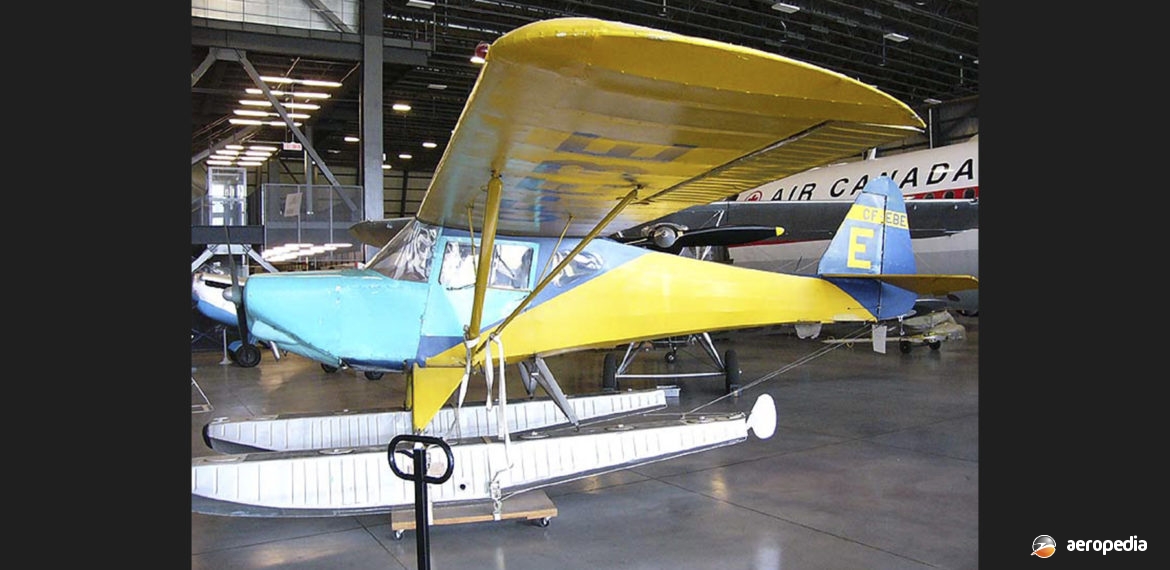Photograph:
Fleet Model 80 Canuck CF-EBE (c/n 149) at the Canada Aviation and Space Museum at Rockcliffe in Ontario (Author’s collection)
Country of origin:
Canada
Description:
Two-seat light sport aircraft
Power Plant:
One 63 kw (85 hp) Continental C-85-12J four-cylinder horizontally-opposed air-cooled engine
Specifications:
- Wingspan: 10.36 m (34 ft)
- Length: 6.81 m (22 ft 4 in)
- Height: 2.16 m (7 ft 1 in)
- Max speed: 179 km/h (111 mph)
- Cruising speed: 161 km/h (100 mph)
- Rate of climb: 168 m/min (550 ft/min)
- Service ceiling: 3,700 m (12,000 ft)
- Range: 483 km (300 miles)
- Empty weight: 389 kg (858 lb)
- Loaded weight: 671 kg (1,480 lb)
History:
The Fleet Model 80 Canuck commenced life in the 1940s as a light aircraft designed by Robert Noury initially known as the Noury N-75, the prototype making its first flight at Mount Hope in Ontario, Canada in 1944. This prototype was a one-off design of conventional monoplane configuration with a welded steel tube fuselage and tail surfaces with fabric covering. It had side-by-side seating, although a further prototype was built with tandem seating to test the concept. By 1945 the Fleet Aircraft Company showed some interest in the design and purchased rights to build the aircraft.
Fleet Aircraft of Fort Erie, Ontario, obtained the prototype and made some design changes which included changing the position of the fuel tank, adding a window in the top of the cabin, lowering the fuselage profile and fitting a Continental C-85 engine in lieu of the C-75 fitted to the prototype. The modified aircraft, still known as the Noury N-75, was first flown on 26 September 1945. Subsequently the fin was increased in size and it became the Fleet Model 80 Canuck, entering production at Fort Erie, 225 aircraft being built, of which some 80 examples are thought to survive.
Production by Fleet Aircraft concluded in 1947 and for the next 10 years a small number were built by Leavens Brothers in Toronto, bringing total production to 224. A couple have had their engine replaced by the 75 kw (100 hp) Continentnal O-200 four-cylinder air-cooled unit.
An example has been imported to this region for restoration but has not been placed on the Australian Civil Aircraft Register as yet.

